Continued from the last post! This post will cover Days 08 to 15 of our trip.
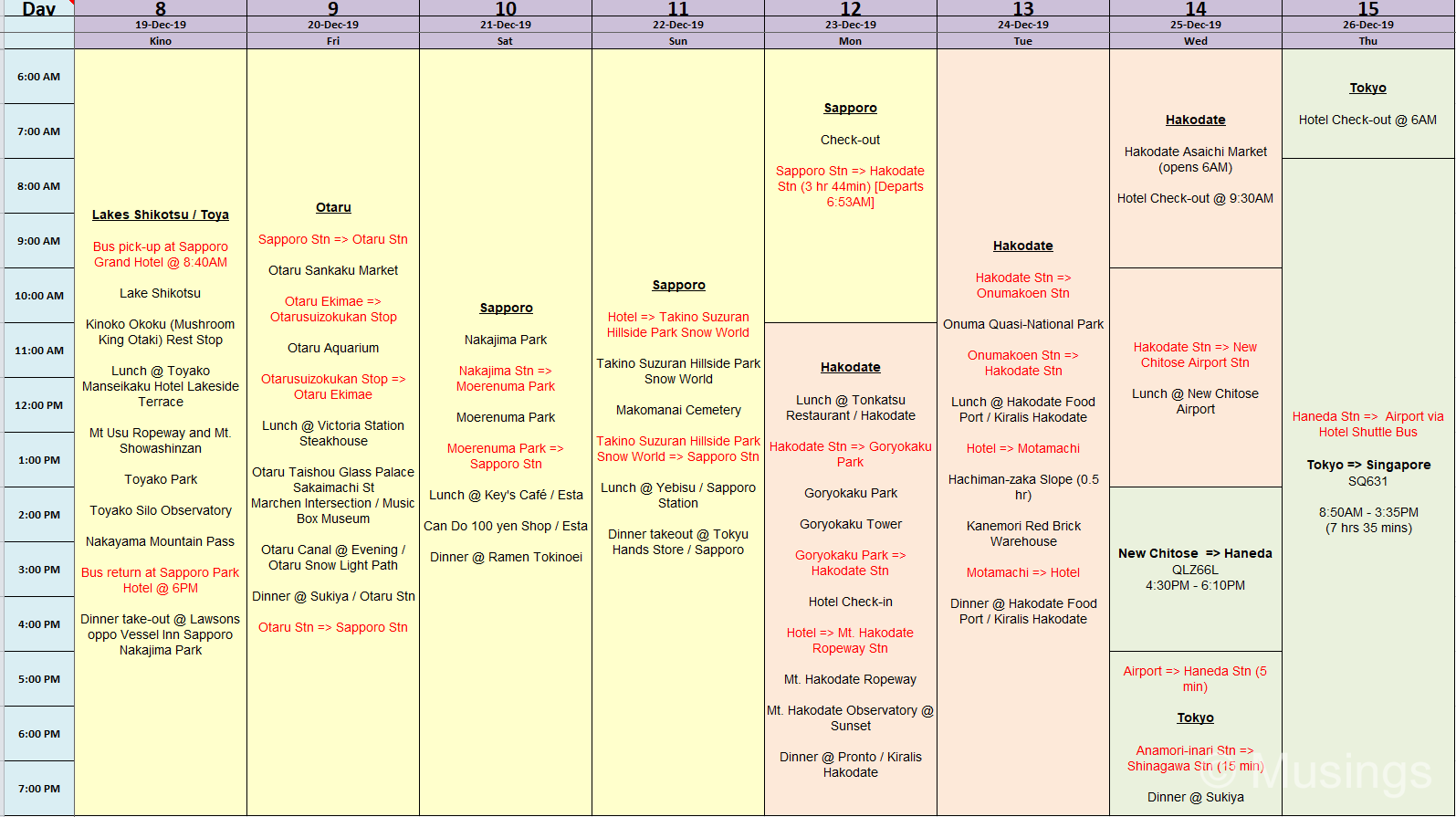
Day 8 (Shikotsu-Toya National Park)
Lake Shikotsu (1 hr+) [blog post here]: our tour bus allocated just 30 minutes here for us – not enough by a long shot, as it already takes 8 minutes walk to get from the vehicle bay to the shoreline itself. The lake itself is of a somewhat more irregular shape than Toya below – which looks like a donut from above haha – but the area where we were at, including a bridge, is scenic enough and there are up to three mountains in the backdrop, depending on your view point. I reckon an hour is enough for you to get a sense of the place, though if you’re self-driving you could easily circle around the lake to see more.
Lake Toya (1.5 hr+) [blog post here]: a roughly circular lake with a land mass – Nakanoshima with its gentle hills – right smack in the center. We lunched at the Toyako Manseikaku Hotel Lakeside Terrace, and had an additional hour to explore the side of the lake where the restaurant was. I didn’t particularly find either lake memorable, scenic as they were still – but your mileage might vary.
Mt. Usu (1.5 hr) [blog post here]: the summit is accessible by ropeway, and there are two fabulous and very different views you can get at the top. One viewing platform – Usuzan Toyako observation deck – is on your right when you exit the ropeway station at the top – the platform in fact is right beside the station, and you’d get fantastic views of Lake Toya and the Nakanoshima landmass in the center of the lake. The other view platform – the crater observation deck – is on the other side and at least 10 minutes walk away, and you’d need to climb up some gentle flights of steps. At the top, you’d be treated to the small cities facing Uchiura Bay, and there’s also an observable crater on the other side of the viewing platform. Both platforms, particularly the crater one, can be really slippery in winter, so watch your step!
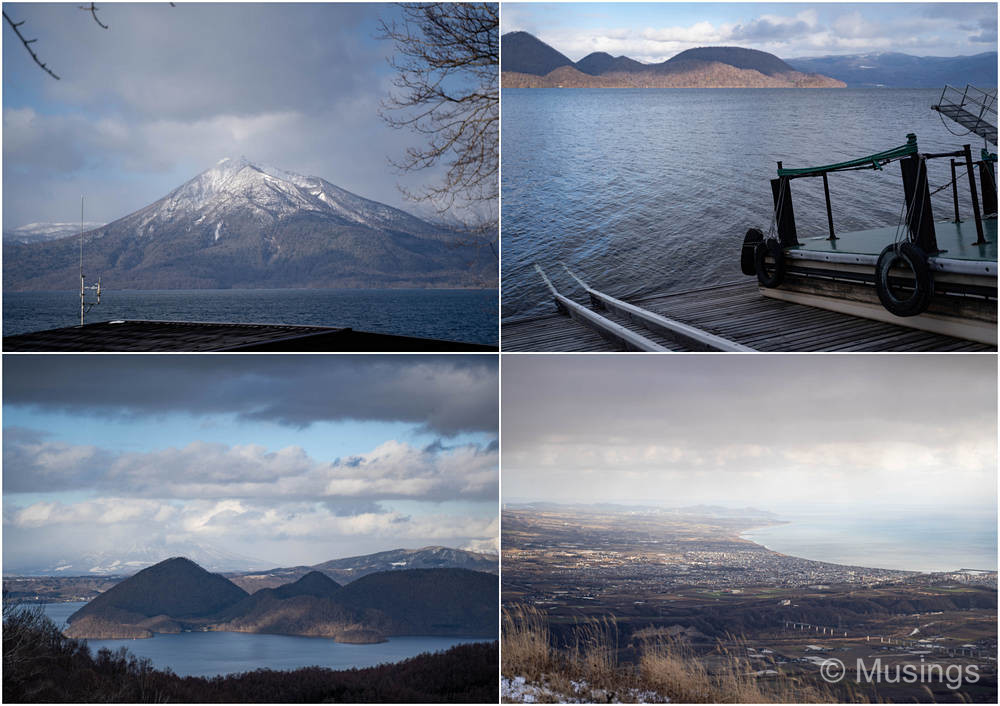
Day 9 (Otaru)
Sankaku Market (1 hr+) [blog post here]: small fresh seafood and produce market that’s situated along an alleyway, and which is also covered from the elements – lending itself to a cozy atmosphere. The Market can be reached from the Otaru Station in under a minute: turn left as you exit the station, walk past the Burger King joint, and look for a small flight of steps up. At the end of that steps is the back entrance to the market.
Otaru Aquarium (2 hr+) [blog post here]: fairly small aquarium which looks dated. Many of the aquarium enclosures are pitifully small. The highlight to a visit to this aquarium that many previous visitors note though are the shows, and they at least don’t disappoint, any compunctions about animals in captivity notwithstanding. The sea lions, dolphins and penguins at least look well fed. The penguin walk was really fun, and the ‘guins walk a circular sort of path and there are plenty of chances for photos – but the place can also get really crowded, and you might also get misbehaving tourists who’d do anything to get their photos, including cutting across the penguins’ path, and trying to get their attention. Remember to get the Otaru Aquarium pass (¥2,720/adult) as it’ll cover the cost of travel from Sapporo to Otaru, Otaru to the aquarium, and the entrance fee into the aquarium itself.
Otaru Canal (1 hr) [blog post here]: the canal that everyone wants to take pictures of from evening. The sweet spot for the picture is over a bridge near the tourist information booth. Lots of people will be attempting their turn to, but unlike Mt. Hakodate, most didn’t linger on the bridge as soon as they are done – excepting photographers wanting to do long exposures with their massive tripods that is!
Sakimaichi Street (3 hr+) [blog post here and here]: long street lined on both sides with dozens of small shops and restaurants. The high points for us was Marchen Intersection, LeTAO bakery (do take the time to climb up the steps to go up its little tower for wonderful views of the street), and the beautifully charming Music Box Museum – definitely visit the latter to gawk at their wares even if you have no plans of buying any. No admission fees to the museum too.
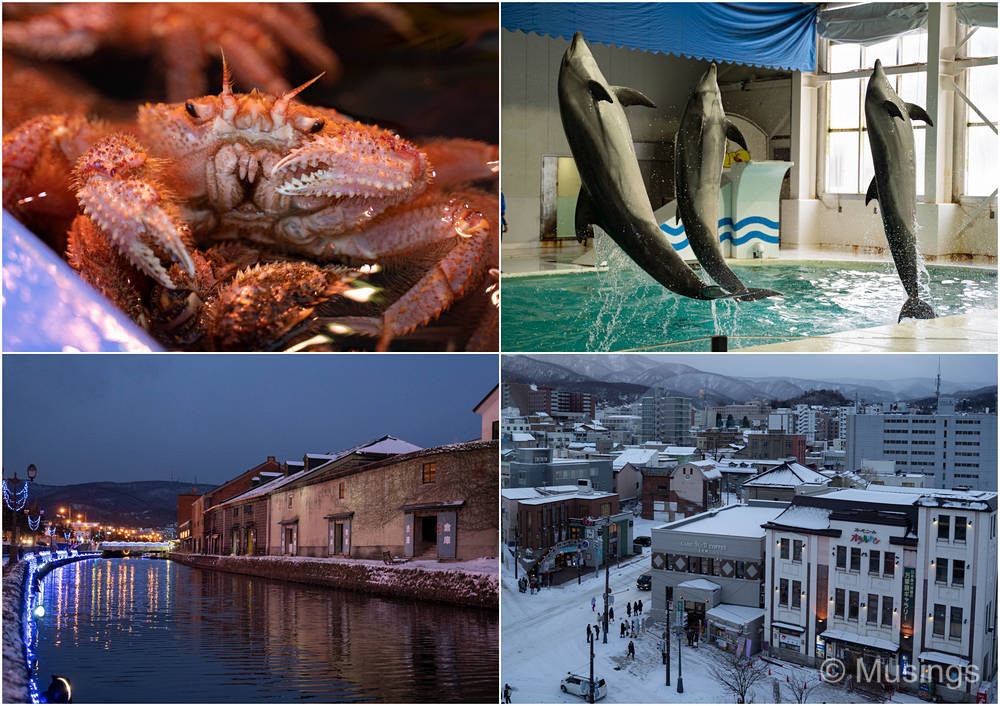
Day 10 (Sapporo)
Nakajima Park (1 hr+) [blog post here]: not a visit by a long shot, but it was just literally across the road from where our hotel was. The park’s centerpiece is a pond whose top layer had frozen, and we were particularly intrigued by what animal had caused those footprints we saw!
Moerenuma Park (3 hr+) [blog post here]: huge park that’s on the outskirts of Sapporo city but still reasonably accessible. Lots of interesting man-made architectural exhibits and natural features, including a small hill to which you can get a look at Sapporo if you make the climb to the top. The park was pretty much deserted the winter morning we visited, and you can easily spend at least half a day walking the park.
Day 11 (Sapporo)
Takino Suzuran Hillside Park (3 hr+) [blog post here]: park that’s free to enter, at least during winter season, and offers a variety of snow-type activities, including skiing, tubing and sledding. This was to had been one of our trip’s highlights, though we were able to only allocate to it our last full day we had in Sapporo before we headed to Hakodate. As it turned out, snowfall in the park had not been heavy enough to create a layer of snow that would permit these activities, so we only got to walk the park and not do anything much else. But this place should be magnificent during mid-winter season, and with it being fairly accessible from Sapporo, is a great alternative if you’re not intending to stay at the dedicated ski resorts in Niseko, Furano and the like.
Makomanai Cemetery (1 hr+) [blog post here]: no, you’re not visiting the cemetery itself, but the area of the park that sits in front of it. There’s that quartet of Chinese-looking mythical warrior heroes that guard the entrance, the row of Easter Island statues right after the entrance, the Stonehenge replica, and also the statute of Buddha in the Lavender hill. If you’re driving, you can stay in the park for as long as you like of course. But if you’re taking the bus, you’ll want to time your visit to make sure you don’t end up waiting another hour for the bus that’ll take you back to the train station.
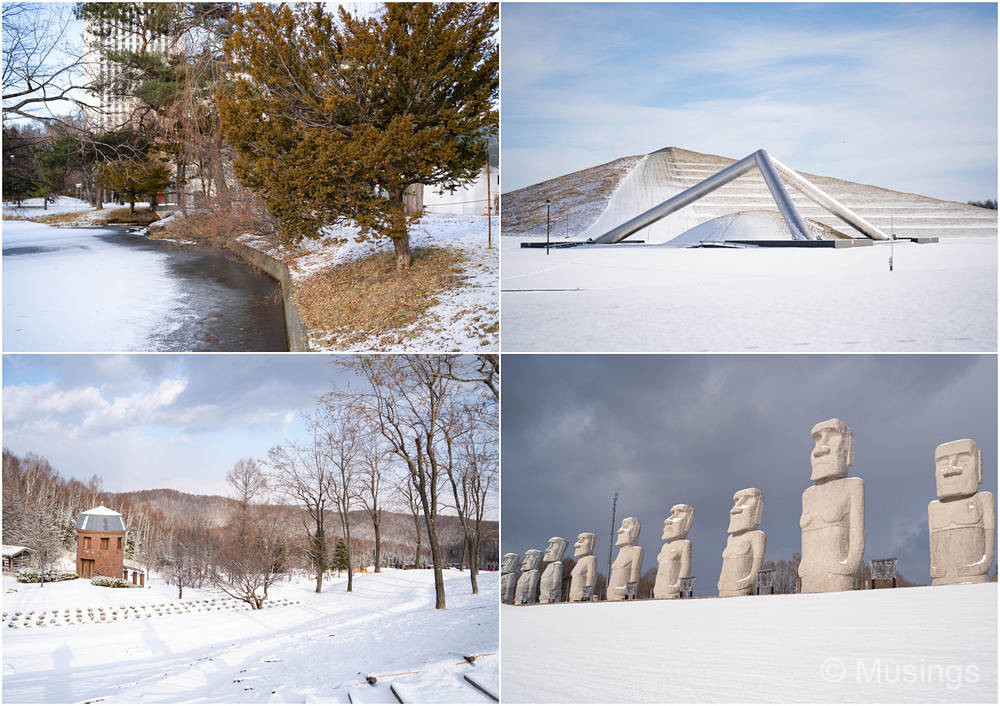
Day 12 (Hakodate)
Goryukaku Park (1.5 hr+) [blog post here]: if you’d like to see what a fortified establishment looks like on the ground, this is a good place to check then. No admission fees too. The park itself isn’t very large on account that many bits – e.g. the walls – don’t seem to be accessible to the public for reasons of safety. It’s not really possible to get a good sense of the park’s unusual shape – a five point star. For that, you’d need to go up…
Goryukaku Tower (1 hr+) [blog post here]: this is the place to go if you’d really like to see what the fuss is about. The view of the park is also very different in summer vs winter, and in winter, it looks surreal, and really akin to an impenetrable fort. You’d need a fairly wide-angle lens to capture the breadth of the park as well. The other views of Hakodate city from the tower are also impressive, as you can get great pictures of Mt. Hakodate and the port area, despite the tower itself not being very tall. Admission is ¥900/adult.
Mt. Hakodate (1 hr) [blog post here]: certainly deserving of the title of being one of Japan’s best places to view a city at night. The visual perspective gives you a view of the city’s central spine surrounded on both sides by the bay, and is breathtaking. Unfortunately, the area that gets you this vantage point is small, and coupled also with the bus loads of visitors that arrive every minute, this is a horrifically crowded place – made possibly even the more annoying by many tourists who want to linger long, do long exposures, or time lapse videos – activities that are in my opinion simply selfish during peak hours. Admission is ¥1,280 for the round trip via ropeway.
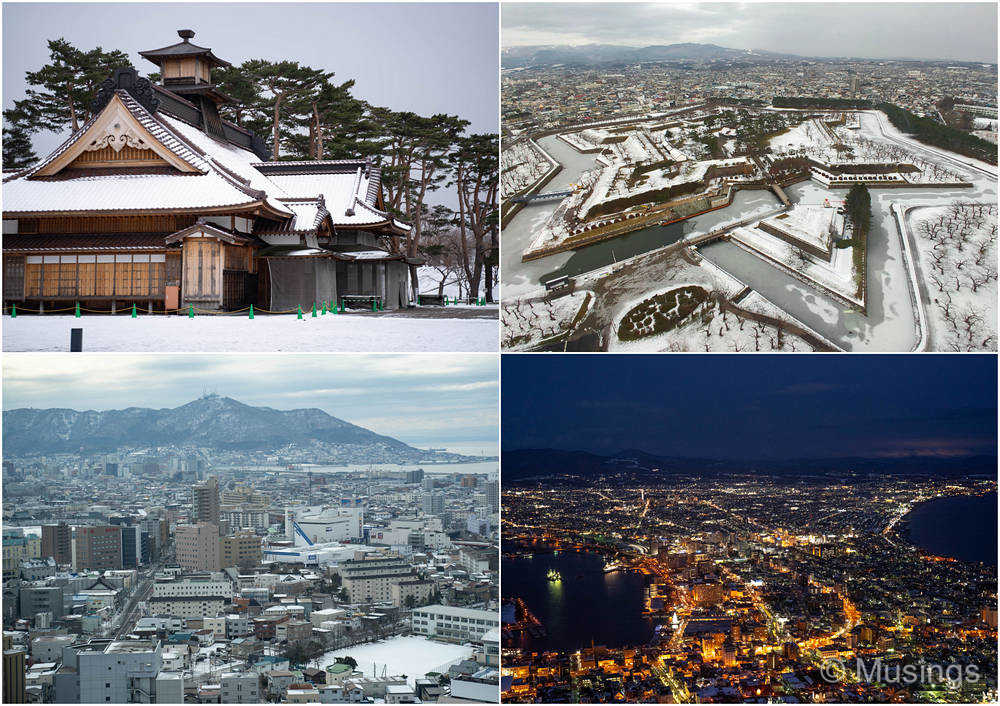
Day 13 (Hakodate)
Onuma Quasi-National Park (3 hr+) [blog post here]: large park that’s well outside Hakodate, but still accessible by fairly frequently departing trains plying the route between Hakodate and Sapporo. The park is considered small for a national park and hence the name ‘quasi’, but it’s impressive nonetheless. Moreover, the relatively small size makes it doable to walk most of the park in several hours. The park’s distinguishing features are its lakes and numerous small islands that are interconnected by bridges. If you love bridges, this is the place where you’d go nuts.
Motomachi (3 hr+) [blog post here]: there are several spots of interest in the area, including western-styled churches and buildings, the two slopes, and also of the Kanemori Red Brick Warehouse that serves today as a souvenir/gift shop and also a couple of eating places (including a sit-down restaurant). The red brick house in early evening while it’s snowing looks magnificent.
Day 14 (Hakodate)
Hakodate Morning Market Square (1 hr+) [blog post here]: my second favorite of the four fresh seafood and produce market, after Tsukiji Outer Market inTokyo. The market has several indoor halls where you can check out produce without having to worry about the natural elements, and there are also intriguing squid-fishing tanks for you to catch your breakfast and eat them, all fresh.
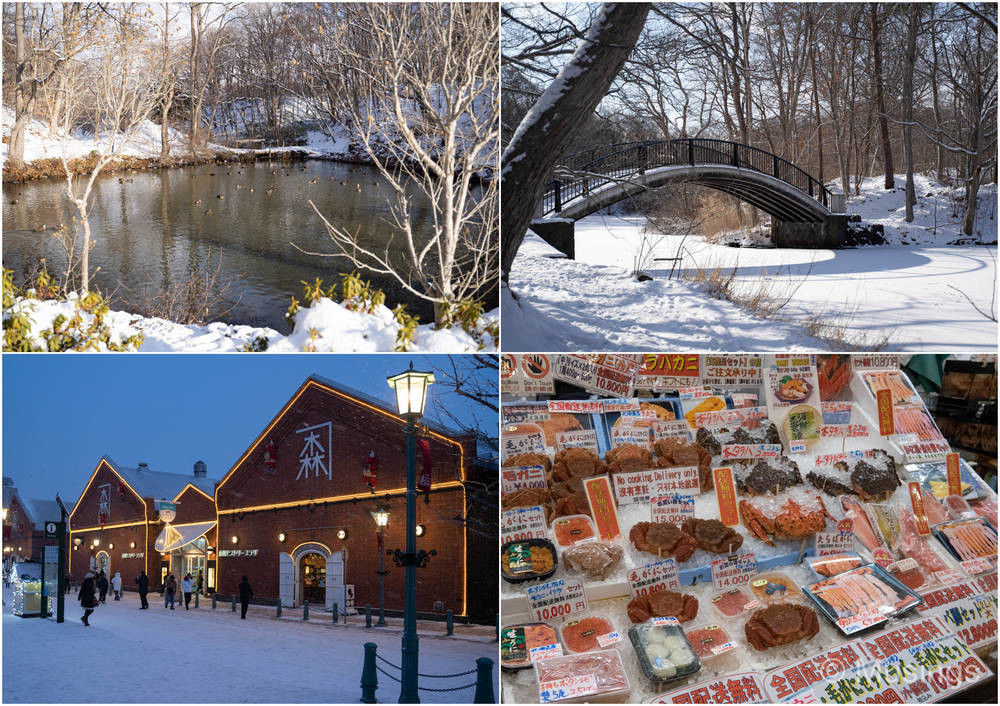
Flight from New Chitose Airport to Haneda Airport in Tokyo (1.5 hrs).
Day 15 (Tokyo)
Flight home to Singapore (7 hrs 35 mins).
—-
And my quick categorization of sights into “Must see/visit”, “Fairly good places”, “OK to skip” categories:
| Category | Places |
|---|---|
| Must see/visit | Bamboo Grove of Hokokuji, Omiya Railway Museum, Shinjuku Gyoen, Asahiyama Zoo, Shirahige Falls, Sapporo TV Tower, Mt. Usu, Otaru Canal, Sakimaichi Street, Moerenuma Park, Goryukaku Tower, Mt. Hakodate, Onuma Quasi-National Park |
| Fairly good places | Shinjuku Winter Illumination @ Terrace City, Yokohama Cup Noodle Museum, Kamakura, Hakone Shrine Torrii Gate, Mishima Skywalk, Lake Ashi Sightseeing Cruise, Hakone Ropeway, Owakudani Station, Gora Park, Shirokoibito Park, Odori Park, Mt. Moiwa, Winter Illumination @ Odori Park, Ningle Terrace, Hokkaido University and Museum, Former Hokkaido Government Office, Sapporo Clock Tower, Lake Shikotsu, Lake Toya, Sankau Market, Otaru Aquarium, Nakajima Park, Takino Suzuran Hillside Park, Makomanai Cemetery, Goryukaku Park, Motomachi, Hakodate Morning Market Square |
| OK to skip | Moss Stairs of Sugimoto-dera, Nijo Market |
And also, a 20 minute video montage of our trip. This was edited from about 4.5 hrs of 4K 60fps video. Took a while to complete it!
Just a few more posts left in this series; three posts on the different places we’ve stayed at this trip, two posts on the equipment used this trip and also post-processing done on pictures, and finally a final retrospection commentary to wrap this trip!
Recent comments